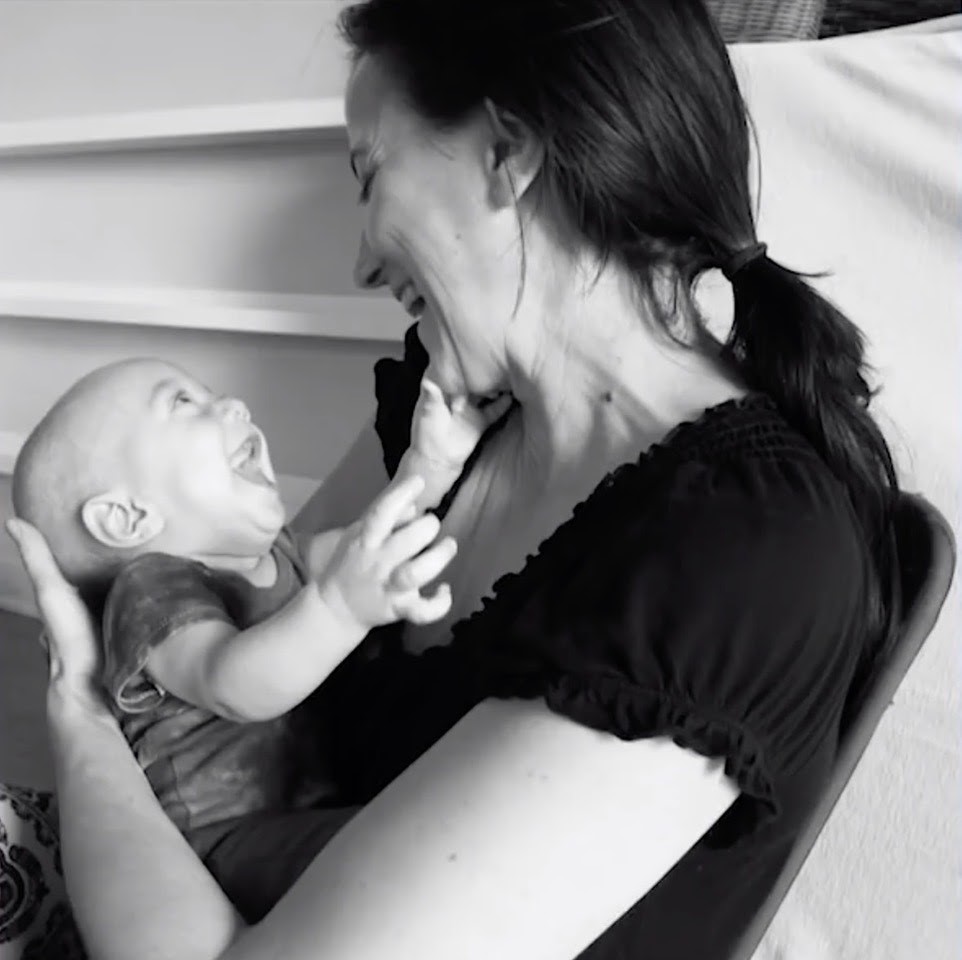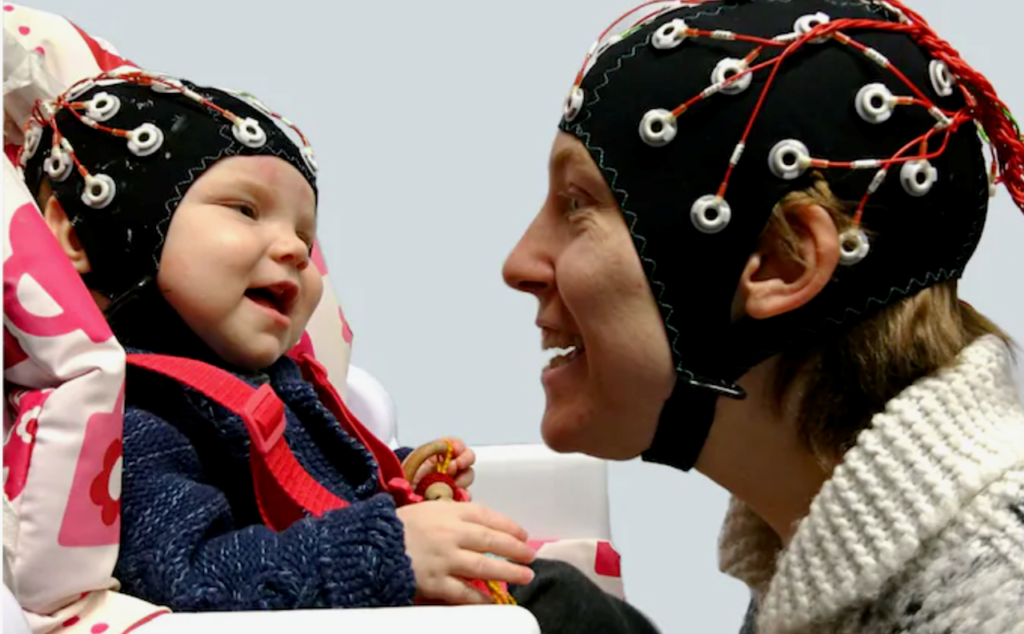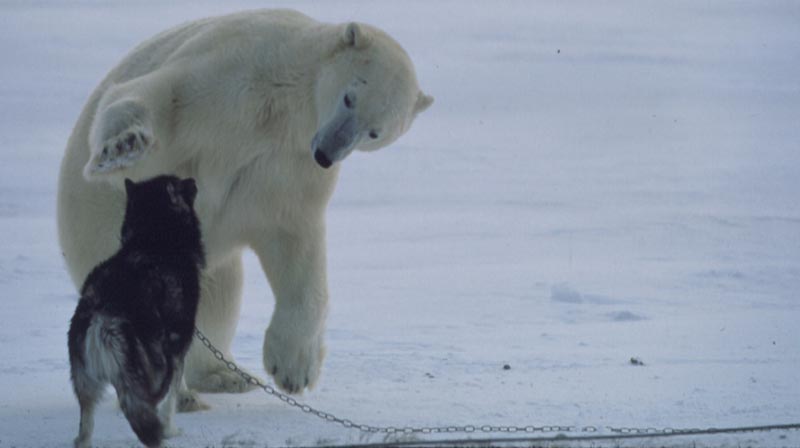Attunement Play
Attunement: The Beginnings of Human Play
The most valuable aspect of play for caretakers to practice with infants is attunement. Attunement creates an infant’s first emotional and playful experiences in the very first months of life — as long as the child is well fed and safe, and the caretaker’s emotional state is calm and open to intuiting the child’s needs.
When parent and child make eye contact, they initiate a harmonic meeting of their minds. As they gaze into each other’s eyes, the baby radiates an involuntary but compelling smile and the parent automatically smiles back, feeling a surge of verbal and bodily joyfulness. The baby usually makes little sounds, a babble or light gurgling laughter, and the parent responds in a rhythmic, sing-song voice — the universal nonsense language of baby-talk. This is a phenomenon seen across all cultures around the globe.
This picture shows what attunement can look like.
What’s going on in the two brains is even more amazing. As they lock eyes, both the joyful, baby-talking mother and the radiantly smiling infant are synchronizing the neural activity in the right cortex of their brains.

The most valuable aspect of play for caretakers to practice with infants is attunement. Attunement creates an infant’s first emotional and playful experiences in the very first months of life — as long as the child is well fed and safe, and the caretaker’s emotional state is calm and open to intuiting the child’s needs.
When parent and child make eye contact, they initiate a harmonic meeting of their minds. As they gaze into each other’s eyes, the baby radiates an involuntary but compelling smile and the parent automatically smiles back, feeling a surge of verbal and bodily joyfulness. The baby usually makes little sounds, a babble or light gurgling laughter, and the parent responds in a rhythmic, sing-song voice — the universal nonsense language of baby-talk. This is a phenomenon seen across all cultures around the globe.

This picture shows what attunement can look like.
What’s going on in the two brains is even more amazing. As they lock eyes, both the joyful, baby-talking mother and the radiantly smiling infant are synchronizing the neural activity in the right cortex of their brains.
The Amazing Facts About Attuning with Infants
If mom and baby were both wired to an electroencephalogram (EEG), it would show that their brain waves are in a synchronized rhythm. In fact, that is exactly the design of Dr. Allan Schore’s research; he ran hundreds of hours of EEGs with caretaker and baby wired up like this.
Schore, a UCLA professor who is a world leader in Attachment Theory, has done much of the breakthrough research identifying the huge impact of attunement between caretaker and infant over the last 15 years. His laboratory identified and described the connection between the biology of how an infant’s brain grows (“developmental neuroscience”) and the psychology of the infant mind (“developmental psychoanalysis”).

In attunement, the brain rhythms of caretaker and infant are literally getting in tune — synchronizing, performing a kind of mind union that is a very pure form of intimacy. It’s an emotional harmonic that is mutual joy — PLAY!
This experience is the most basic state of play, and it becomes a foundation for the much more complex play states that we engage in throughout life.
Attunement forms the foundations for later emotional self-regulation. Children who are deprived of this joyful, mutually trusting social experience often face emotional difficulties and exhibit erratic behavior in their later years. They can have difficulty forming healthy attachments as adolescents and as adults they may be less able to cope with unexpected challenges, regulate emotions, make sound decisions when risk is involved or learn to deal effectively as they enter into more and more complex social interactions.
Attunement (the base state of play) buffers the growing infant and toddler against excessive surges of emotion. It also helps orchestrate the symphony of genetic signals that govern optimal brain development during childhood, adolescence, and young adulthood. This may seem like heavy science, but we believe it is important for parents, caretakers, healthcare professionals, educators, and policymakers to understand the critical importance of incorporating this early state of play into the lives of very young children.
Attunement with Movement
Movement is an important type of play throughout life; combining attunement with movement enhances the benefits of attunement for the child and is good for the adult.
Combining attunement with activation of the cerebellum (through movement) stimulates large areas of the brain creating new neural pathways. The new pathways from this moving, playful state integrate areas of the brain that might not otherwise communicate; connecting those brain areas supports development of language and other skills.
This video demonstrates an “Expression” swing, which combines attunement with movement. The face-to-face design enables children under five to swing comfortably with an adult. As parent and child (or grandparent and grandchild) experience the joy of seeing each other’s facial expressions, the child’s abilities to feel secure and socially competent are growing.
Attuning with Children of Any Age
This excellent six-minute video from the Harvard University Center on the Developing Child, “5 Steps for Brain-Building Serve and Return,” shows a method of interacting that creates attunement with children of any age. The serve-and-return methods demonstrated here promote self-regulation and impulse control in children and form a strong foundation for understanding children’s interactions with adults. The back-and-forth of serve-and-return also contribute to the child’s language development.





